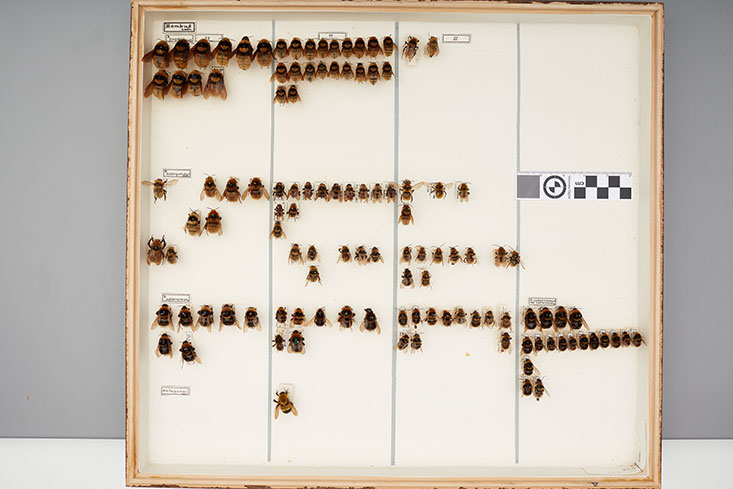Genetic time series
Population and conservation genetic studies usually involve only single sampling and therefore represent only snapshots of evolution. The analysis of genetic time series allows changes in genetic diversity to be analysed directly. In addition, time series can be used to calculate effective population sizes, allowing us to estimate the status of a population and the effect of drift. We use our rich collections as a resource and our modern laboratories to collect genetic data for populations that we also sample recently. The data allow us to draw conclusions about the influence of human activities on the genetic diversity of our native insect fauna.

Photo: UHH/CeNak, Husemann
Selected publications:
-
Husemann M, Zachos FE, Paxton RJ, Habel JC (2016). Editorial: Effective population size in ecology and evolution. Heredity 117: 191-192.
-
Cousseau L, Husemann M, Vangestel C, Lens L (2016) Spatiotemporal analyses of demography in a declining population of house sparrows. Heredity 117: 259-267.
-
Husemann, M., Cousseau, L., Borghesio, L., Lens L., Habel, J.C. (2015) Effects of population size and isolation on the genetic structure of the East African Mountain White-eye Zosterops poliogaster (Aves). Biological Journal of the Linnean Society 114: 828-836.
-
Husemann, M., Cousseau, L., Callens, T., Matthysen, E., Vangestel, C., Durand, E.Y., Hallmann, C., Githiru, M. & Lens L. (2015) Post-fragmentation population structure in a cooperative breeding Afrotropical cloud forest bird: emergence of a source-sink population network. Molecular Ecology 24: 1172-1187.
-
Husemann, M., Nguyen, R., Ding, B., Danley, P.D. (2015) A genetic demographic analysis of Lake Malawi rock-dwelling cichlids using spatio-temporal sampling. Molecular Ecology 24: 2686-2701.
-
Habel, J.C., Husemann, M., Finger, A., Danley, P.D., Zachos, F.E. (2014) The relevance of time series in molecular ecology and conservation biology. Biological Reviews 89: 484-492.

